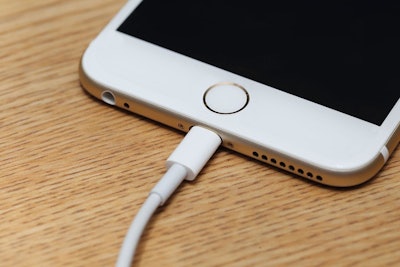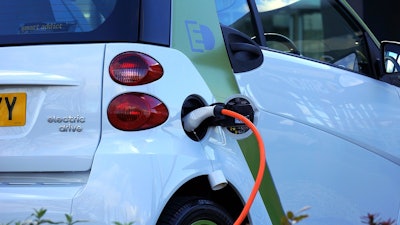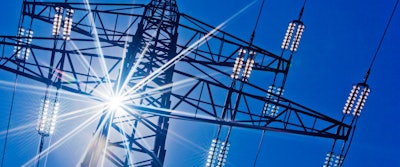
Lithium-ion batteries, while widely used in solar power storage and electric and recreational vehicle power, have significant drawbacks, including quick deterioration and safety concerns. This type of battery must be recharged often and slowly or else they can explode and catch fire. They are also non-recyclable, and will eventually end up in landfills.
ZapGo has developed an alternative to lithium-ion technology that is fast-charging, long-lasting, safe, and recyclable. This technology is based on carbon nano-materials, including graphene. This new Carbon-Ion technology holds promise to revolutionize appliances, consumer electronics, grid energy storage, and clean transportation.
Steven Voller, CEO of ZapGo, founded the company with the goal of producing the next generation of energy storage devices. The technology will have the ability to charge mobile phones in seconds, enable cordless appliances like vacuum cleaners and drills to perform as if they were plugged in, and charge electric cars in the same time that it takes to fill a tank with fuel today.
ZapGo was founded five years ago with intellectual property developed by the Materials Science Group at the University of Oxford to make a new form of battery that can replace lithium and cobalt batteries. Their primary goal was to overcome problems in the mainstream market of batteries to create safer and faster electronics and vehicles than those that exist today.
 (Denys Prykhodov/Shutterstock)
(Denys Prykhodov/Shutterstock)The company’s Carbon-Ion technology will produce longer-lasting batteries in consumer electronics, such as smartphones.
“100 million smartphones will be sold this year,” Voller told Chem.info. “Eventually, they will have to be replaced and they will end up in a landfill because the batteries inside of them are non-recyclable.”
Voller identified that the problem with smartphones today is that the chemistry of the battery wears out after a few years. “There are battery cycles, or charge cycles, and if you charge your phone 8 hours every night, in one year you’ve used 300-400 charge cycles. Batteries wear out at 500 charge cycles, so you’ll soon need to replace your phone,” explained Voller.
ZapGo’s Carbon-Ion technology will prolong smartphone usage, extending their life span from one to two years to 30 years. Phones with the new technology will last for 100,000+ charge/discharge cycles. The batteries inside of the phones will also be recyclable.
 (CC0 Public Domain)
(CC0 Public Domain)Voller hopes that the Carbon-Ion technology will create a better experience for electric car users as well.
“Billions of people drive gasoline vehicles. It takes about 5-10 minutes to fill up their tank, which will last them 300+ miles before they have to go to the gas station again. This is not the same as the electric car driver experience,” Voller said.
The Carbon-Ion technology can be used to charge electric vehicles in 5-10 minutes, with the same range as gasoline vehicles. In this way, electric car drivers will have a similar experience to gasoline car drivers, making the switch to electric cars easier for consumers.
Voller believes that the technology’s biggest impact will be grid energy storage.
“By 2050, the market for grid energy storage will be ½ trillion dollars, according to Bloomberg. In Europe and Asia, 100 percent of new car sales will have to be electric vehicles by 2040. The size of this market is enormous,” Voller told Chem.info.
The Carbon-Ion technology will enable national grid energy storage to cope with increasing demands of fast-charging electric vehicles by storing off-peak or green electricity. This is made possible by removing all lithium and cobalt, so it is safe and low-cost.
 (Clean Energy Wire)
(Clean Energy Wire)The first products that ZapGo will be launching this year are a ride-on scooter and a jump starter for vehicles. The scooter’s charging time has been reduced from eight hours to five minutes, and the jump starter requires no pre-charging. In 2020-2021, ZapGo hopes to bring cell phones with the Carbon-Ion technology to the market.
“As the demand for lithium and cobalt increase, the prices for these materials will only continue to increase. Replacing these batteries with common materials and using the same conventional manufacturing techniques will likely result in products that are not only safer but less expensive than the alternatives,” Voller said.
Looking to the future, Voller predicts that the market for battery storage units will boom.
“Everybody is recognizing that it now makes sense to have a battery/storage unit in their homes. If you have solar panels on your roof, they won’t work at night. People will need a way to store energy during the day for use at night. Grid companies and utilities are aware of this, and are looking to find intelligent solutions to this problem. There is also a global push to decrease environmental impacts and dependence on fossil fuels.”
ZapGo’s Carbon-Ion technology not only makes electronics and vehicles fast-charging, but also safe and environmentally friendly. ZapGo’s work extends to a variety of applications, and will surely find success as the industry pushes for clean grid energy storage. In a time where lithium resources are depleting, new innovations and alternatives like ZapGo’s are necessary now more than ever.






















